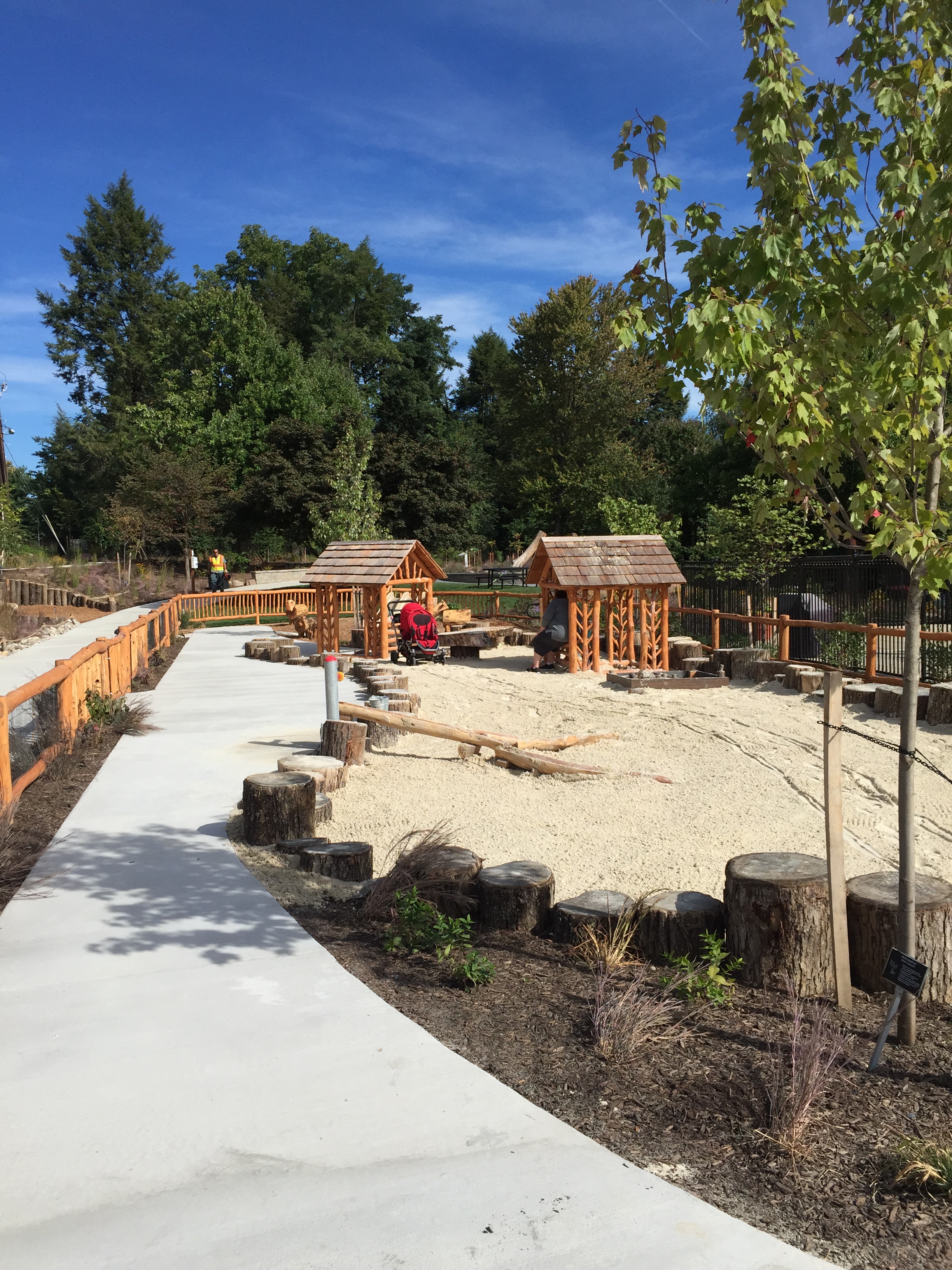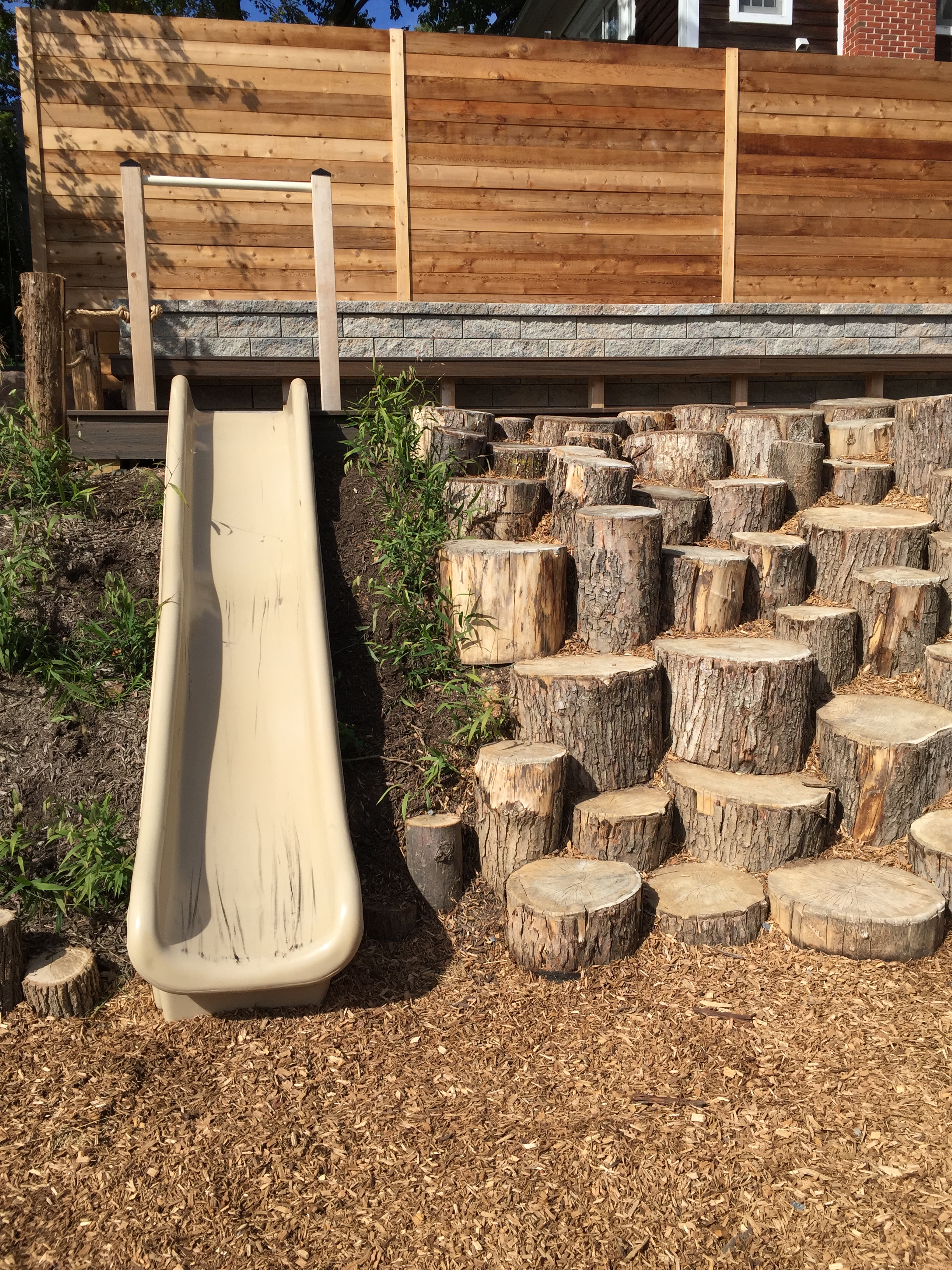Ever since reading about The Land, I’ve been intrigued by the idea of nature playgrounds. While I didn’t want my toddler setting things on fire (one of the many risky options at The Land), I do like the idea of substituting natural materials for plastic playsets. By their very nature, they’re more versatile and offer a more creative experience than playgrounds, which tend to be highly-directed. So when nearby Gaithersburg opened up a nature playground at Constitution Gardens Park, I knew I wanted to visit with Sprout.
With blue skies and fall just approaching, it was a lovely morning to check it out. While it’s perfectly walkable from Old Town Gaithersburg – and a wonderful resource for those who live there – almost everyone else will need to drive. It’s far from the closest Metro station and I still haven’t figured out how to bike safely from Rockville to Old Town. While the park doesn’t have a parking lot, there’s ample street parking right next to it.
The park is long and rather narrow, a bit squished between a private house and a clubhouse for some nearby condos. The initial impression is a bit odd, as there’s a big fence with a swimming pool right next to it. In addition, it could be confusing for little kids who now want to go to the pool instead. Thankfully, while Sprout pointed out the pool, he wasn’t particularly keen on going in it.
The rest of the park was more thematically fulfilling. A large area filled with sand offers kids an actual chance to play in the dirt, which most parks look down upon. It’s equipped with a push-button water fountain and buckets, which seemed to be the most popular feature in the park by far. Never underestimate toddlers’ love of filling things with water and dumping them out. Thankfully, everyone did pretty well waiting to take their turns. There’s also a little wooden building with a counter like a store, a tiny slide, and wooden farm animals for riding.
Other areas of the park were geared more towards older children. A staircase made of uneven logs led to two very steep slides. While Sprout enjoyed climbing up, one look down and he was shaking his head. Thankfully, they offer an alternate exit down a different path. Hunks of wood of varying shapes and length made for Lincoln Logs perfect for wobbly stacking. Another, much bigger hand-pump, sprayed water into a faux dried streambed decorated with iridescent glass. Even though he didn’t come close to reaching the top on the handle, Sprout still pumped it up and down as much as he could a number of times. There’s just something about kids and water.
Although we went on a Friday morning, there were several families there, with joggers and dog-walkers wandering through as well. The park is open on three sides to the residential streets, which makes it a nice alternate route to the sidewalk. The kids were enthusiastic without being wound – perhaps the natural materials provided a calming effect.
The only major complaint I had about the park was the lack of shade. While there are some trees, the park is so new that they haven’t gotten very big yet. Although I thought it would be a relatively cool day, with highs in the 70s, the D.C. sun got the best of me and I was boiling by the end of the trip.
While not wild and crazy the way some nature playgrounds are, Constitution Gardens provided a nice reprieve from the molded plastic jungle gyms that all use the same interchangeable pieces.

